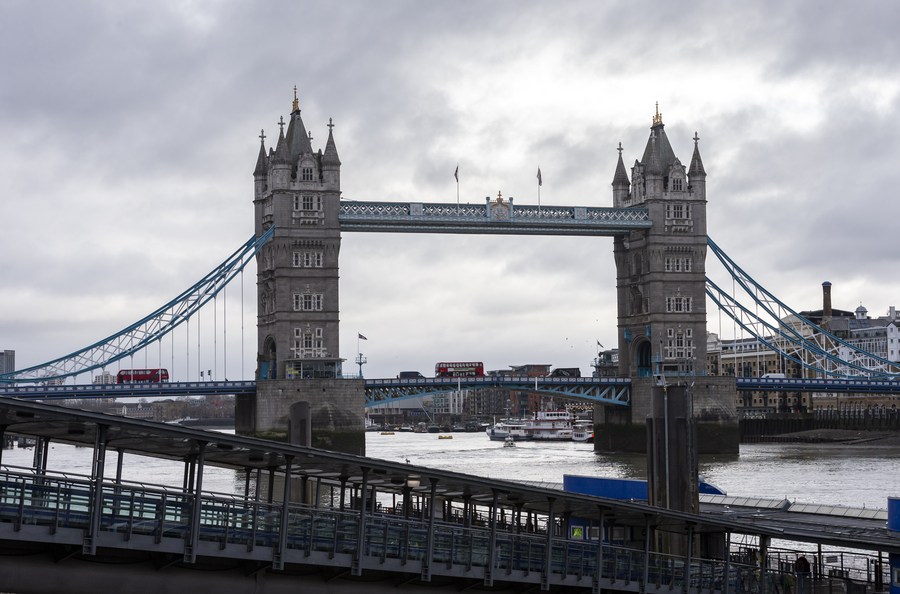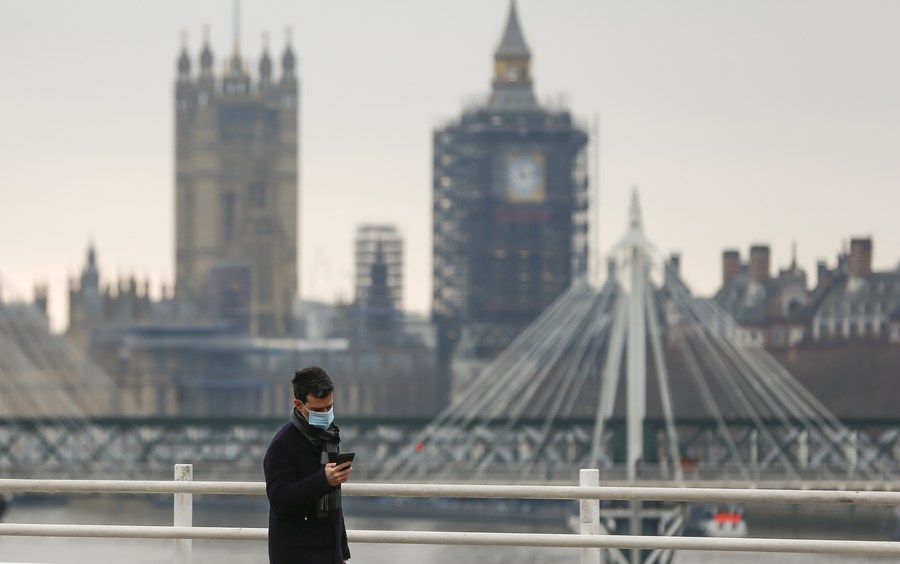
Vehicles drive along the Tower Bridge in London, Britain, on Jan. 5, 2021. (Xinhua/Han Yan)
The report urged the government to set tougher targets to lower air pollution if it hopes to reduce the health inequalities laid bare by the COVID-19 pandemic, as the most disadvantaged communities who contribute the least to air pollution suffer the most from its effects.
LONDON, Feb. 11 (Xinhua) -- Around 64,000 deaths a year in England are linked to air pollution, with disadvantaged communities hit the most, a new British parliamentary report revealed Thursday.
Published by the House of Commons (lower house of the British parliament) Environment, Food and Rural Affairs Committee, the report called on the British government to address alarming levels of poor air quality in England, highlighting a strong and established case for tackling air pollution.
Warning of air pollution's deadliness and its disproportionate impact on disadvantaged communities, members of the committee reaffirmed that improving air quality should be at the core of the post-pandemic rebuilding.

Photo taken on Dec. 29, 2020 shows a man walking along the Waterloo Bridge backdropped by the Houses of Parliament in London, Britain. (Xinhua/Han Yan)
The report also urged the government to set tougher targets to lower air pollution if it hopes to reduce the health inequalities laid bare by the COVID-19 pandemic, as the most disadvantaged communities who contribute the least to air pollution suffer the most from its effects.
It also raised concerns that the government's current Clean Air Strategy "lacks the ambition" to fully address the challenges posed by poor air quality.
"In rebuilding after the pandemic, we have a moral duty to put improving air quality at its core. While the Clean Air Strategy is a step in the right direction, the government needs to be more ambitious," said Chair of the committee Neil Parish.
In January 2019, the British government announced the Clean Air Strategy setting out plans to meet ambitious legally binding international targets to reduce emission of the five most damaging air pollutants by 2030. ■




